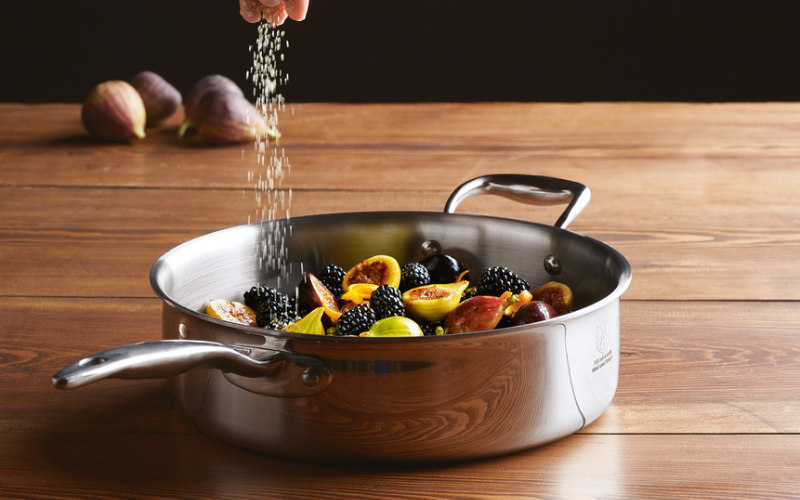Back | Blog posts overview
Moly’s in the kitchen
20/12/2021
Is molybdenum key to the perfect sear on scallops? Type 316 stainless steel cookware provides unparalleled functionality for professional and amateur chefs alike. Pots, pans and other cooking products made with this alloy are both corrosion and high temperature resistant. Molybdenum helps cookware to perform at the highest level for decades, even in industrial kitchens.

© Heritage Steel
What makes a great meal? Usually, quality ingredients come to mind. But the materials used to prepare and cook food are also important. Just like certain oils perform better than others at high temperatures, so do certain materials. Stainless steel works brilliantly and remains unaffected even when repeatedly heated up. The ability to tolerate heat opens a smorgasbord of culinary possibilities: stainless steel cookware can sear, fry, flambé or go in an oven at 250OC for the ultimate cooking versatility.
Metallurgy meets food science
Stainless steel needs no coating nor seasoning to brown food impeccably. Many chefs also desire the flavourful layer of "fond", the bits of caramelized food that stick to the bottom of stainless steel pans. When deglazed, this fond makes an excellent base for sauces and soups. Some cookware made with Type 316 stainless steel needs less fat or broth than other cooking materials, which preserves the original flavour of food and maintains its nutrients. And an Italian manufacturer developed a technology known as URA (Ultra Resistant Application) to make stainless steel pans more non-stick without any coating.
Austenitic stainless steels like Type 316 offer many benefits, but they are not the best conductor of heat. If cookware were made with only this material, heat would concentrate directly above the burner rather than spreading evenly across the pan's base. This can lead to hot spots over the flame where food can easily burn without constant attention and stirring. Therefore, high quality pots and pans also contain internal layers of aluminum or copper to boost heat conductivity. Either the entire cookware consists of multiple layers of metal, or its bottom is made of a "sandwich" disc consisting of a high-conductivity metal encapsulated by stainless steel. Some manufacturers use ferritic stainless steel as the outside or bottom layer or their cookware. Why? Because ferritic grades are magnetic, and increasingly popular induction stoves only work with magnetic materials – non-magnetic austenitic cookware will simply not heat on these stoves. These multi-layered designs work on any stove and combine excellent heat distribution with all the benefits of stainless steel.
Discover more reasons why moly-containing stainless steel is ideal in your kitchen.
Back | Blog posts overview

